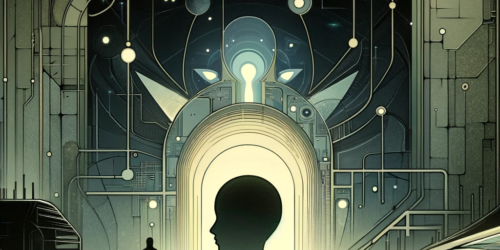Jacques Vallée

Jacques Vallée, a French-American computer scientist, venture capitalist, and UFO researcher, was born on September 24, 1939, in Pontoise, France. Vallée is renowned for his significant contributions to computer science and his systematic study of unidentified flying objects (UFOs).
In the 1960s, as the UFO phenomenon began to receive widespread attention, Vallée embarked on his research journey. His fascination with the seemingly supernatural aspects of UFOs led him to study the phenomenon from a scientific perspective. Vallée’s approach was unique, integrating elements of computer science, physics, and astronomy with anthropological and psychological theories.
One of Vallée’s significant contributions to UFO research is his book “Anatomy of a Phenomenon,” published in 1965. Here, Vallée proposes that the UFO phenomenon is not a series of isolated incidents but a complex, multidimensional occurrence transcending the bounds of a single scientific discipline. He also introduced the idea of UFOs being part of a larger, interdimensional reality that interacts with our own.
Vallée’s writing portfolio extends to numerous books on UFOs, including “Challenge to Science: The UFO Enigma” (co-authored with Janine Vallée) which further explores the scientific aspects of UFO encounters. “Passport to Magonia” links UFO phenomenon with ancient legends and myths, suggesting its presence in human history for thousands of years. In “The Edge of Reality,” co-written with J. Allen Hynek, Vallée focuses on various case studies of UFO sightings and encounters. His next major work, “Messengers of Deception,” investigates UFO contacts and cults, proposing that the phenomenon could be a form of extraterrestrial or interdimensional communication, covertly hidden from the public.
Vallée’s “The Invisible College” puts forth the intriguing concept of a group of scientists discovering the influence of UFOs on the human race. His trilogy – “Dimensions,” “Confrontations,” and “Revelations” – is a meticulous case study of alien contact, an exploration of his search for such contact, and a critical examination of human deception related to alien contact, respectively.
The “Forbidden Science” series, consisting of four volumes, provides a detailed account of Vallée’s journals from 1957 to 1999, offering a unique first-hand exploration of his scientific journey. His most recent work, “Trinity: The Best-Kept Secret,” co-authored with Paola Leopizzi Harris, lools into a specific UFO event, demonstrating his continued dedication to unraveling the UFO enigma.
In addition to his UFO research, Vallée co-developed one of the first computerized mapping systems, contributing significantly to artificial intelligence and computer graphics. He has been a staunch advocate for transparency and the declassification of government documents related to UFOs, arguing for public access to information about this phenomenon’s nature and extent. Jacques Vallée’s work continues to inspire and provoke thought in both the scientific community and the public.
Beyond his fascination with UFOs, Jacques Vallée’s work in the computer science field has been equally remarkable. He co-developed the first computerized mapping system, which laid the groundwork for modern Geographic Information Systems (GIS). This was instrumental in revolutionizing fields such as urban planning, transportation, and geography, among others. His work in artificial intelligence and computer graphics has also been influential, contributing to the advancement of these fields.
However, it’s his groundbreaking work in UFO research that has made Vallée a prominent figure in the field. His books have become seminal texts for researchers and enthusiasts alike, challenging conventional thinking about UFOs. His multidisciplinary approach, leveraging his knowledge in computer science and physics, provides a unique perspective on the phenomenon.
In “Wonders in the Sky: Unexplained Aerial Objects from Antiquity to Modern Times,” co-authored with Chris Aubeck, Vallée moves beyond the modern era, examining historical accounts of unexplained aerial phenomena. This book further bolsters his argument about the longstanding presence of this phenomenon in human history.
Throughout his career, Vallée has been a strong advocate for transparency, pushing for the release of classified government documents related to UFOs. He firmly believes in the public’s right to know about the phenomenon’s nature and scope. His constant call for governments to be more forthcoming with information on UFOs has made him a respected figure among those demanding greater transparency on the subject.



